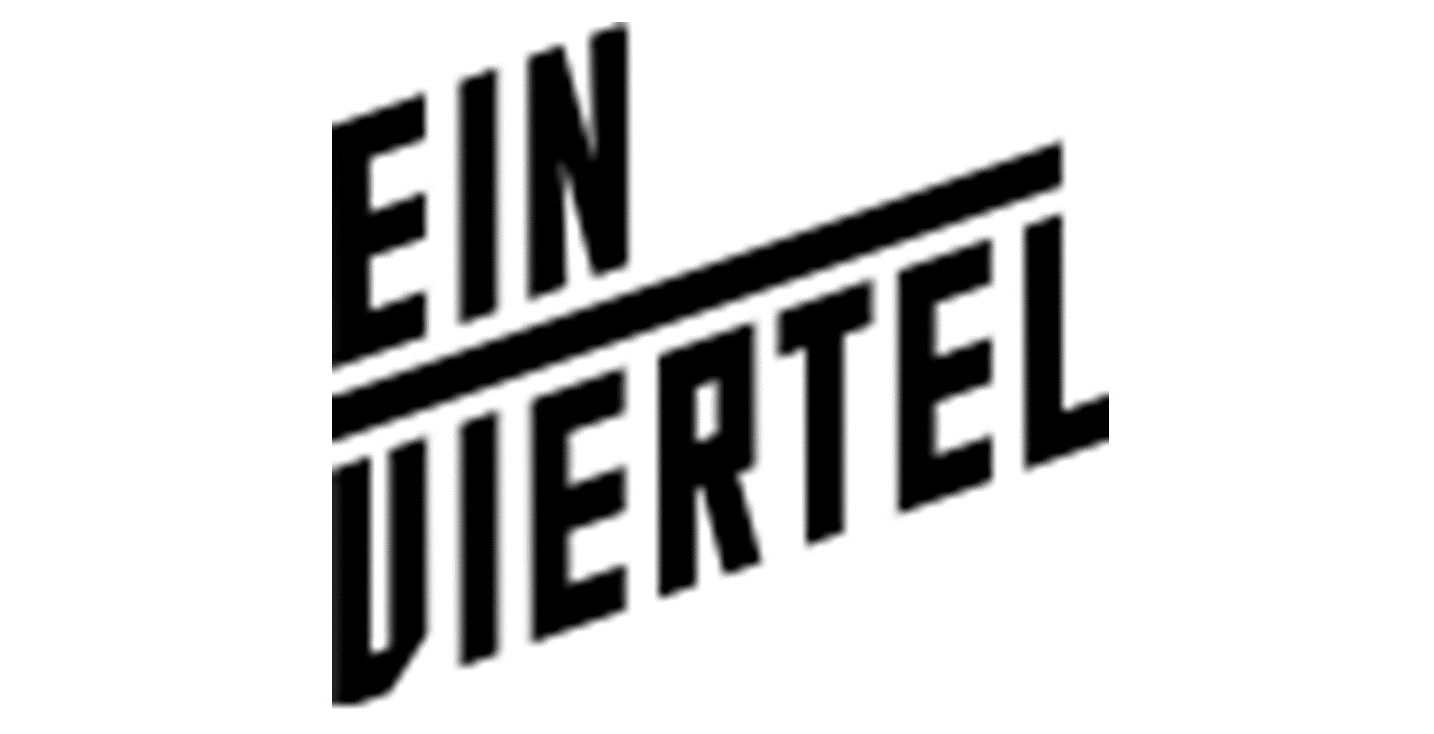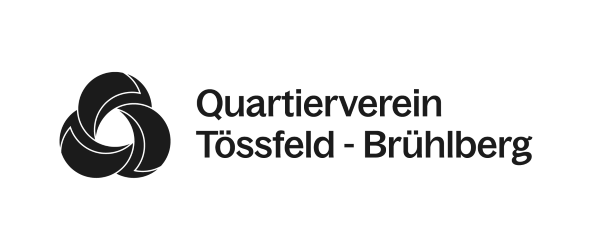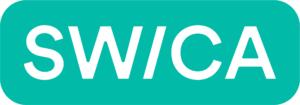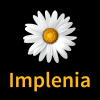All news at a glance
September 2025 – Newsletter
Video Living Lab Lokstadt
What is behind the Living Lab Lokstadt? In a short video, we explain the aims and activities of L5 together with two residents.
Click here for the video
Mobility campaign with initial results
The mobility campaign in Lokstadt was launched on May 25. In this project, we wanted to find out how the residents of Lokstadt get around, which means of transport they use most often and whether an app that makes their own mobility behavior visible can help them choose more sustainable means of transport more often. To this end, the routes traveled, including means of transport, were recorded in the SWICE app and the respectiveCO2 consumption was shown.
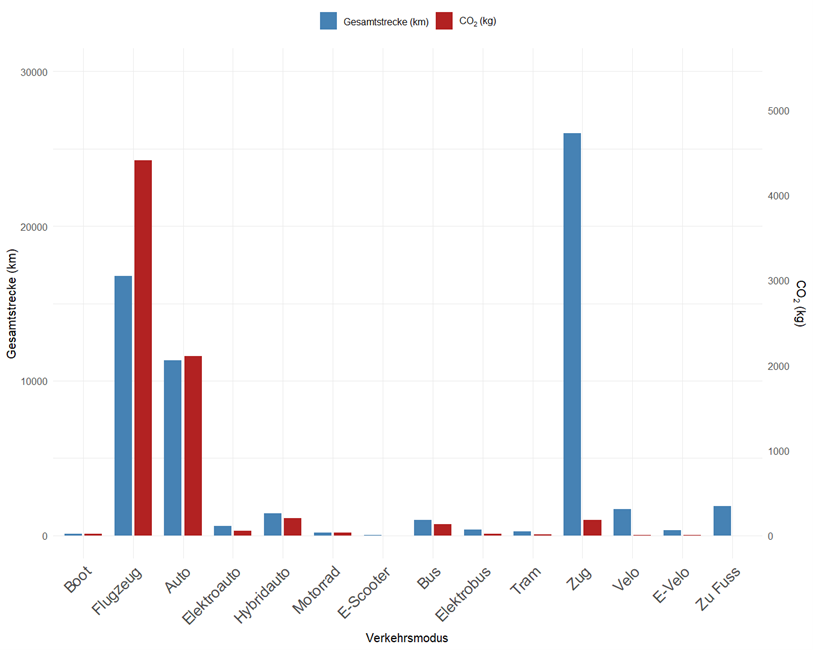
Distance traveled and CO2 emissions per means of transport by all Lokstadt participants
Means of transportation
Overall, the participants’ transportation is already very sustainable. They most frequently traveled on foot (around 36% of routes), followed by train (17%) and bicycle (13%). Even for longer distances of 3 kilometers or more, the train remained the most important means of transport (42%). The car was used more frequently (24%), while a small proportion continued to use the bicycle (7%). The result shows: In the city, participants rarely rely on the car and instead benefit from the good accessibility in the neighborhood. The car only becomes a real alternative for longer distances.
CO2 consumption
Looking at the total distances traveled, it is striking: Travel on foot, by bus or by bike hardly plays a role in overallCO2 consumption. Lokstadt residents covered the majority of kilometers by train, plane and car (see chart). The difference becomes particularly clear when the distances are compared with the respectiveCO2 emissions: while 8 airplane journeys (approx. 16,700 km) caused over 4,400 kg ofCO2, the emissions from 843 train journeys (approx. 26,000 km) totalled only around 180 kg ofCO2. The figures thus show: Even small changes to long journeys (for example, fewer flights or car journeys) make a big difference toCO2 emissions.
Use of the mobility app
It gets exciting when you look at how the choice of means of transport has changed since the introduction of theCO2 consumption display in the app. Since June 15, the CO₂ consumption per route has been calculated and explained with clear comparisons in the app.
In the initial phase without CO₂ visualization, car journeys still accounted for around 20% of all kilometers traveled. After the visualization was introduced, this proportion fell to 13%. Train use also fell slightly – from 69% to 67%. In contrast, the proportion of kilometers covered by bike, e-vehicles and bus increased significantly. A positive trend can therefore be observed for the mobility campaign. However, as the study period was very short, only a longer observation period will show whether this remains the case in the long term.
L5@Dialogplatzfest
Come and visit us at the Dialogplatzfest, we will be on site from 16:00-18:30.
Which lifestyle type are you? Find out in just 10 minutes
Fill out the short questionnaire and discover which lifestyle type you are! You will also receive suitable tips and inspiration on how you can make your life in Lokstadt even more practical, varied and perhaps even more sustainable.
You can already fill out the questionnaire here!
Lokstadt Local
We create an interactive map with local offers, stores, leisure activities and infrastructure: What absolutely has to be on the map? What do you think is missing in Lokstadt?

07.07.2025 – Workshop extended steering group
The first results of the mobility visualization and lifestyle survey were presented at the Living Lab Lokstadt meeting.
A key topic was the promotion of pedestrian and bicycle traffic. We discussed ideas such as colored path markings, better signaling for greater safety and creative greening. Specific problems, such as night-time car traffic at Migros Teo, were also addressed. This would require discussions with the city, where the LL could establish contact.
Campaigns such as bike test weeks, a joint bike day or a bike check were proposed to motivate people to use sustainable mobility. The idea of a local bike workshop also came up. These are to be pursued further in spring 2026.
Another concern: many people are not familiar with the Lokstadt mobility concept. A flyer with local offers and sustainable mobility alternatives is in the planning. We will be looking for helpers after the summer vacation. If you would like to get involved, please contact livinglab.lokstadt@zhaw.ch.
25.05.2025 – Successful start in the Living Lab Lokstadt
Last Sunday, the big neighbourhood brunch took place at Lokstadt. The atmosphere was fantastic! Despite the occasional rain, the neighbourhood put their heart and soul into setting the 50-meter-long table: they baked, cooked, decorated, ground the finest coffee (thanks to
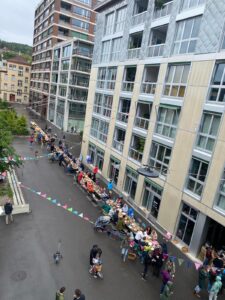 After brunch, the event continued with a varied post run through the neighborhood to mark the start of the Living Lab Lokstadt campaigns. Participants were able to find out more about the Living Lab Lokstadt and register to take part in the current exciting campaigns. Young and old alike were able to get creative in Christa Rogger’s studio and design their own linoleum prints. On the roof terrace, Rudolf Stadelmann gave exciting insights into the history of Lokstadt and Lorena Rechsteiner challenged the participants to put their CargoVelo skills to the test. For the little adventurers, there was a sweat-inducing handicraft course, lovingly designed by Lilo Kasser together with Gusto d’Oro. Anyone who needed to mend an item of clothing or was looking for fashion inspiration could visit the PILA fashion manufactory.
After brunch, the event continued with a varied post run through the neighborhood to mark the start of the Living Lab Lokstadt campaigns. Participants were able to find out more about the Living Lab Lokstadt and register to take part in the current exciting campaigns. Young and old alike were able to get creative in Christa Rogger’s studio and design their own linoleum prints. On the roof terrace, Rudolf Stadelmann gave exciting insights into the history of Lokstadt and Lorena Rechsteiner challenged the participants to put their CargoVelo skills to the test. For the little adventurers, there was a sweat-inducing handicraft course, lovingly designed by Lilo Kasser together with Gusto d’Oro. Anyone who needed to mend an item of clothing or was looking for fashion inspiration could visit the PILA fashion manufactory.
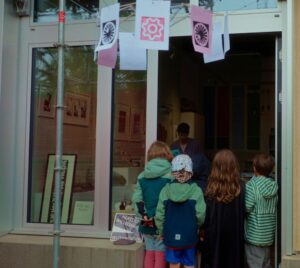 We from the ZHAW were able to have many enriching conversations with the residents of the neighbourhood on this day. Together, we discussed the future of Lokstadt – about well-being, sustainable mobility and the use of energy. It’s great to see how much commitment and interest can be felt here on site.
We from the ZHAW were able to have many enriching conversations with the residents of the neighbourhood on this day. Together, we discussed the future of Lokstadt – about well-being, sustainable mobility and the use of energy. It’s great to see how much commitment and interest can be felt here on site.
A big thank you goes to the Stadtlokt Kollektiv for the great organization of this day and the Quartierverein Brühlberg-Tössfeld for their support – without your commitment this special start to the Living Lab Lokstadt would not have been possible!
We would like to thank everyone who attended and look forward to many more exciting encounters in the Living Lab Lokstadt!
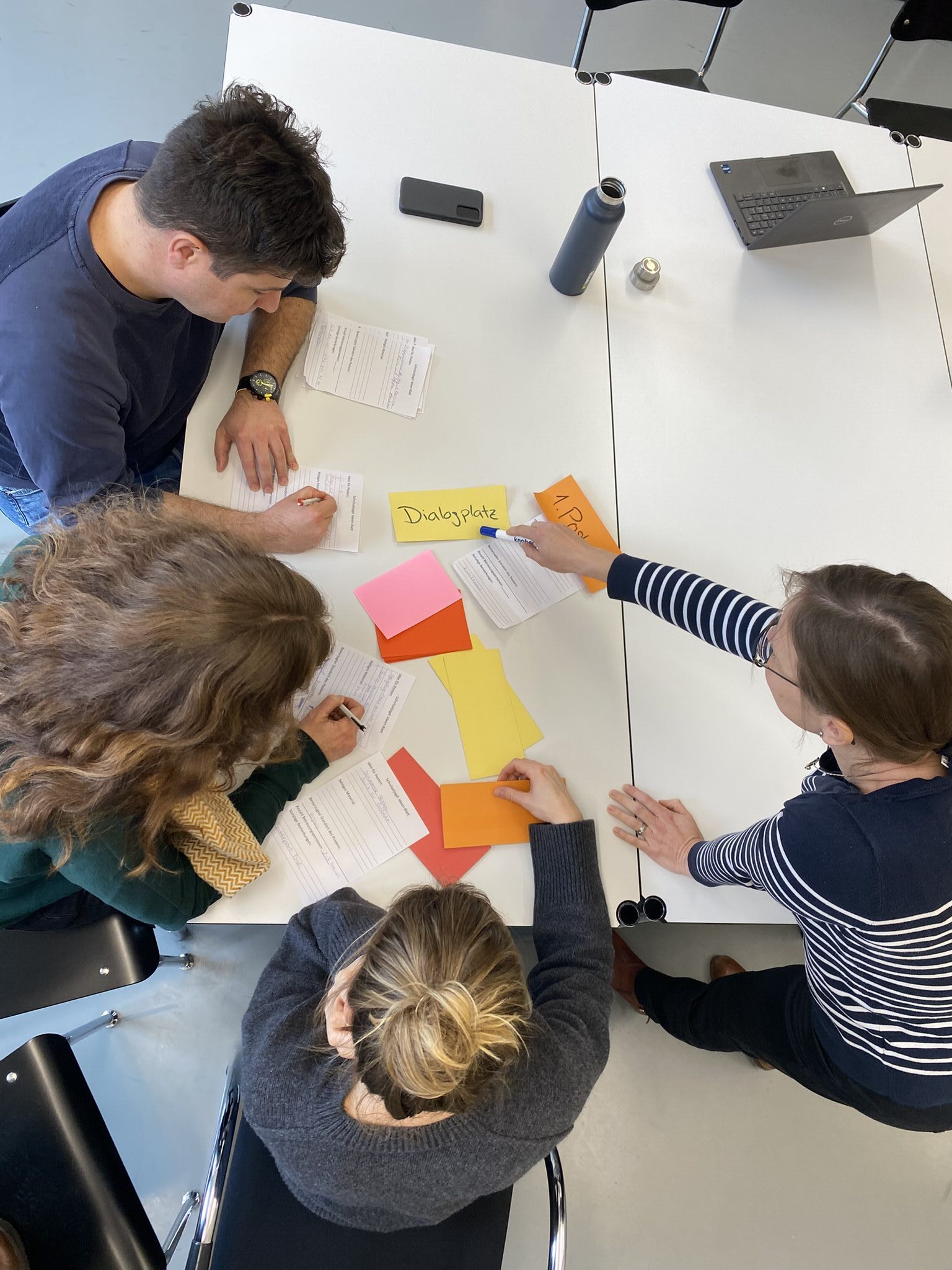
15.01.2025 – The time has come in mid-May 2025
To kick off the event, we are organizing a scavenger hunt through the various buildings at Lokstadt. Participants can take a look behind the scenes at BigBoy, Krokodil, Tender etc., master challenges at various stations and find out what’s behind the Living Lab Lokstadt. At the same time, the residents can get to know each other better and spend an exciting afternoon in the neighbourhood. To plan this, we met with the residents of Lokstadt on January 15, 2025.
Would you also like to help organize this event in your neighbourhood? Do you like to be creative, do all sorts of ideas come to mind when you hear Lokstadt scavenger hunt or do you know someone who knows someone who … you know …
Then get in touch with us!
30.11.2024 – Survey on cargo bikes
During two weeks in November 2024, we investigated the interest of Lokstadt residents in a CargoVelo service. We talked to existing providers of cargo bike rental services at Lokstadt as well as to the residents themselves and tried to understand how useful they find this type of transportation and how they can incorporate it into their everyday lives. We are using this information as the basis for a CargoVelo campaign in the fall of 2025, in which we want to investigate whether this type of transportation could be a possible alternative to car use in urban traffic.
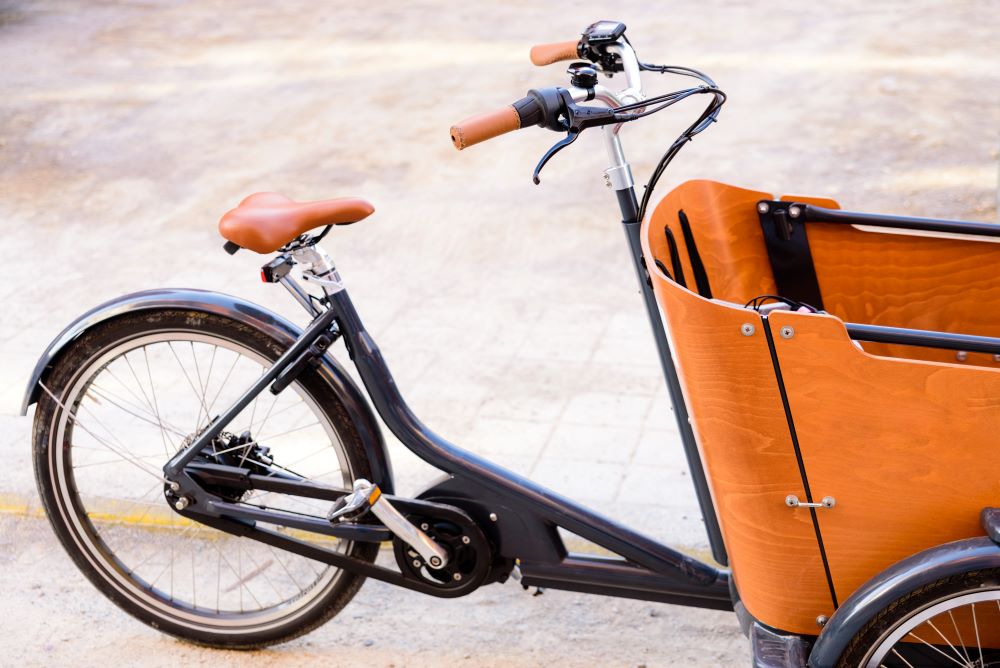
31.12.2023 – Workshops with residents
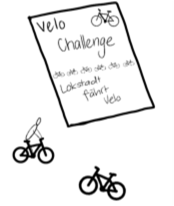 In January 2023, workshops were organized on two evenings with the residents of Lokstadt. The workshops served to identify the needs of residents and the areas in which they see potential for more sustainable lifestyles. Together with the residents, we analyzed problems in a total of five areas and developed possible solutions. A total of 16 exciting ideas emerged from the workshops with stakeholders and residents.
In January 2023, workshops were organized on two evenings with the residents of Lokstadt. The workshops served to identify the needs of residents and the areas in which they see potential for more sustainable lifestyles. Together with the residents, we analyzed problems in a total of five areas and developed possible solutions. A total of 16 exciting ideas emerged from the workshops with stakeholders and residents. 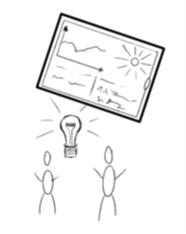 In particular, it emerged that there is a desire for better offers and opportunities to use bicycles and that there is generally a great desire for more interaction between residents. This could be in the form of swapping/loaning items or joint activities, events and meeting spaces.
In particular, it emerged that there is a desire for better offers and opportunities to use bicycles and that there is generally a great desire for more interaction between residents. This could be in the form of swapping/loaning items or joint activities, events and meeting spaces.

